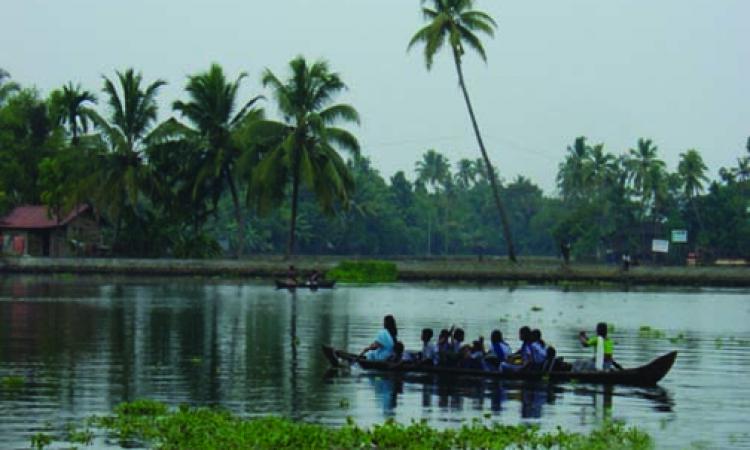
NITI Aayog releases SDG India Index 2020-21, Kerala top performing state while Mizoram is the top gainer
Niti Aayog releases the third edition of the SDG India Index 2020–21, developed in collaboration with the United Nations, India to track the progress of all states and Union territories (UT) towards achieving Sustainable Development Goals. The 2020-21 index shows that the country's overall SDG score has increased from 60 in 2019 to 66 in 2020, primarily because of the exemplary nationwide performance in Goal 6 (clean water and sanitation) and Goal 7 (affordable and clean energy).
As per the index, the top preforming states and UTs are Kerala followed by Himachal Pradesh and Tamil Nadu while the worst performing are Chhattisgarh, Nagaland and Odisha. The top performing states is achieving the goal of clean water and sanitation are Goa and Lakshadweep, while Mizoram, Haryana and Uttarakhand are the top gainers in 2020–21 index compared to 2019, with an increase of 12, 10 and 8 points, respectively. (Hindustan Times)
$8.1 trillion investment needed over the next three decades to tackle climate crisis: Report
According to the State of Finance for Nature report, a total investment of $8.1 trillion in nature is required over the next three decades to successfully tackle the climate, biodiversity, and land degradation crises. This implies that each year, until 2050, the world will need to spend $536 billion. The report which was produced by the World Economic Forum, UN Environment Programme (UNEP), and the Economics of Land Degradation (ELD) Initiative hosted by the Deutsche Gesellschaft fur Internationale Zusammenarbeit (GIZ), in collaboration with Vivid Economics, favours unlocking the potential of nature-based solutions to close the finance gap by 2050. The report further highlights that at present, only $133 billion which is 0.1 percent of global GDP is being utilised to tackle climate change. Tripling this will enhance the resilience of the global economies as the biodiversity loss is already costing the global economy 10 percent of its output each year. (National Herald)
With an intent to save dugongs, researchers restore 14 acres of seagrass
Over the past 10 years, the researchers at the Gulf of Mannar Marine Biosphere Reserve along with other marine experts have restored 14 acres of degraded seagrass on the seabed of the Gulf of Mannar region. The effort has been made to conserve the endangered dugongs, also known as sea cows, whose numbers have drastically fallen over the years because of the decline in seagrass beds in the Gulf of Mannar and Palk Bay.
Seagrass beds are the habitat for the wide range of marine fauna including dugong. However, destructive practices such as bottom trawling to catch fish in the shallow waters, pollution, coastal development and many other factors have threatened the growth and survival of seagrass. Researchers have been manually transplanting seagrass sprogs in the Gulf of Mannar and a total of 14 acres of degraded seagrass area has been restored in the region from 2011 to 2020 with a success rate of 85-90 percent. (The New Indian Express)
Using less single-use plastic and switching off lights and AC key to sustainable tourism: Survey report
According to a survey report by an international digital travel agency Agoda, the top concerns among most Indian travellers surveyed are polluted beaches and overtourism, followed by single-use plastics and energy inefficiencies. The Sustainable Travel Trends Survey, which was conducted among 18,327 travellers worldwide included 1,020 from India who associated sustainability with accommodations using renewable resources, natural cleaning products and eco-friendly designs or furniture.
The report further said that globally and in India, people consider governments most accountable for making positive environmental changes around travel, followed by tourism authorities and individuals themselves. For ensuring sustainable tourism, the top responses provided globally and in India were to manage waste including using less single-use plastics, and switch off the air conditioner and lights when leaving their accommodation. (The Economic Times)
Over 90 percent of districts in east coast are hotspots for natural disasters: CEEW
According to an independent analysis conducted in West Bengal and Odisha by the Council on Energy, Environment and Water (CEEW), at the backdrop of the recent cyclone Yaas, over 90 percent of districts on the east coast are hotspots for cyclones, floods, droughts and their associated events and more than 250 million people live in these districts. The study further informs that after 2005, the number of districts in India affected by cyclones tripled on the yearly average while the frequency of cyclones doubled. As per the report, in the last decade alone, 258 districts were affected by cyclones and the cyclone hotspot districts are primarily concentrated along the eastern coast which include Baleswar, East Godavari, Howrah, Kendrapara, Nellore, North 24 Parganas, Paschim Medinipur, Puri, Sivaganga, Tuticorin, and West Godavari. (The Weather Channel)
This is a roundup of important news published from May 25 – June 7, 2021. Also read policy matters this fortnight.
/articles/kerala-top-performer-niti-aayogs-sdg-india-index-2020-21